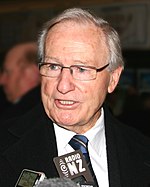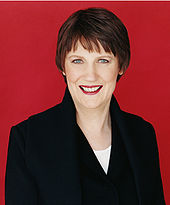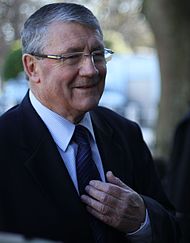
Back Elecciones generales de Nueva Zelanda de 1996 Spanish Élections législatives néo-zélandaises de 1996 French Elezioni generali in Nuova Zelanda del 1996 Italian 1996년 뉴질랜드 총선 Korean
| |||||||||||||||||||||||||||||||||||||||||||||||||||||||||||||||||||||||||||||||||||||||||||||||||||||
All 120 seats in the House of Representatives 61 seats needed for a majority | |||||||||||||||||||||||||||||||||||||||||||||||||||||||||||||||||||||||||||||||||||||||||||||||||||||
|---|---|---|---|---|---|---|---|---|---|---|---|---|---|---|---|---|---|---|---|---|---|---|---|---|---|---|---|---|---|---|---|---|---|---|---|---|---|---|---|---|---|---|---|---|---|---|---|---|---|---|---|---|---|---|---|---|---|---|---|---|---|---|---|---|---|---|---|---|---|---|---|---|---|---|---|---|---|---|---|---|---|---|---|---|---|---|---|---|---|---|---|---|---|---|---|---|---|---|---|---|---|
| Opinion polls | |||||||||||||||||||||||||||||||||||||||||||||||||||||||||||||||||||||||||||||||||||||||||||||||||||||
| Turnout | 2,135,175 (88.28%) | ||||||||||||||||||||||||||||||||||||||||||||||||||||||||||||||||||||||||||||||||||||||||||||||||||||
| |||||||||||||||||||||||||||||||||||||||||||||||||||||||||||||||||||||||||||||||||||||||||||||||||||||
 Results by electorate, shaded by winning margin | |||||||||||||||||||||||||||||||||||||||||||||||||||||||||||||||||||||||||||||||||||||||||||||||||||||
| |||||||||||||||||||||||||||||||||||||||||||||||||||||||||||||||||||||||||||||||||||||||||||||||||||||
The 1996 New Zealand general election was held on 12 October 1996 to determine the composition of the 45th New Zealand Parliament. It was significant for being the first election to be held under the new mixed-member proportional (MMP) electoral system, and produced a parliament considerably more diverse than previous elections. Under the new MMP system, 65 members were elected in single-member districts by first-past-the-post voting, while a further 55 "top-up" members were allocated from closed lists to achieve a proportional distribution based on each party's share of the nationwide party vote.
1996 saw the National Party, led by Jim Bolger, retain its position in government, but only after protracted negotiations with the smaller New Zealand First party to form a coalition. New Zealand First won 17 seats—including sweeping every single Māori electorate, all of which had been dominated by the Labour Party since the Second World War. Particular emphasis was placed on New Zealand First's unprecedented success, particularly among Māori; their five Māori electorate winners became known as the "Tight Five". The party's position as "kingmaker" meant they were able to place either of the two major parties into government, a significant election outcome for such a new party.
Various other unusual results occurred under the new system. For one, the National Party sought to ensure the parliamentary representation of the ACT New Zealand, a newly-formed libertarian party which had largely split from the Labour Party after the end of Rogernomics. National endorsed ACT leader and former Labour minister Richard Prebble against their own for Wellington Central, a consistently safe Labour seat. Under New Zealand's MMP rules, a party qualified for list seats if it won at least one electorate seat, regardless of vote share. Bolger thus wanted to ensure ACT could potentially be part of a National-led coalition. Prebble unexpectedly won, though ACT's vote share would have qualified them for MMP in any event. Other unusual occurrences was the large amount of new Māori MPs – leading to the backronym "More Māori in Parliament" for MMP.[1] With the introduction of MMP in 1996, the proportion of Māori in Parliament increased from 8% to 14%, to an all-time record of 17 MPs.[2]
- ^ Tahana, Jamie (13 October 2021). "More Māori in Parliament: Sandra Lee reflects on introduction of MMP". RNZ. Archived from the original on 21 January 2025. Retrieved 12 August 2023.
- ^ Taonui, Rawiri (15 July 2016) [20 June 2012]. "Ngā māngai – Māori representation". Te Ara - the Encyclopedia of New Zealand. Increased Māori representation. Archived from the original on 21 January 2025. Retrieved 12 August 2023.
With the introduction of MMP in 1996, the proportion of Māori in Parliament increased from 8% to 14%, a total of 17 MPs. In 2011, 22 MPs (18%) were Māori; the number increased to 28 (23%) in 2017, but fell to 25 (21%) in 2020, when no New Zealand First MPs were re-elected.




